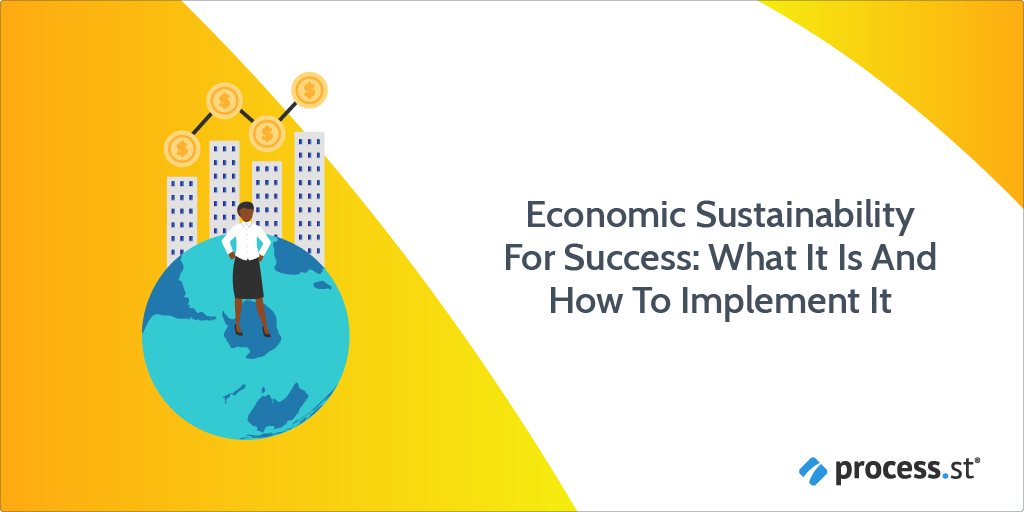
2018 saw the U.S. economy grow by 4.1%, well ahead of the trend.
Following this, U.S. President Donald Trump stated:
“These numbers are very, very sustainable. This isn’t a one-time shot.” – Donald Trump, Is the economy really as great as Trump says?
What did Trump mean when he said that this number was “very sustainable” – and was it?
In 2019, and as predicted by economists, the U.S. growth rate slowed down and returned to 2.1%.
Unsustained high growth rates are very common. It seems that the magic 2% has a gravitational pull, hauling back growth rates that increase over it. Is this 2% what economic sustainability looks like?
In this article, we at Process Street explore what is meant by economic sustainability. We look at the benefits economic sustainability can bring on a global level and at a business level. We suggest ways you can become economically sustainable in your business today.
Read through the sections below:
- What is economic sustainability?
- Is economic sustainability merely a myth?
- Solving the economic sustainability problem
- Why economic sustainability is important for your business
- How to be economically sustainable in your business with Process Street
- Reconnect with your wild side – reduce your ecological footprint and become economically sustainable
Shall we get started?
What is economic sustainability?
Economic sustainability can refer either to the continued success of an economy over time or more recently to the way an economy operates in a sustainable manner, protecting social and environmental elements.
In this article, I want to look at both of these conceptions of economic sustainability and make the case that they are interlinked and should be considered together to gain a more holistic understanding.
The Thwing Center defines economic sustainability in its traditional sense as:
“[…] The ability of an economy to support a defined level of economic production indefinitely.” – Thwing Center, Economic Sustainability
Now, consider another definition for the term economic sustainability:
“Economic sustainability refers to practices that support long-term economic growth without negatively impacting social, environmental, and cultural aspects of the community.” – University of Mary Washington, Economic Sustainability
How do these two definitions differ?
The second definition brings environmental and social factors into the mix for sustained economic production. This definition takes more of a green view on economic sustainability.
The first definition can be applied on a larger scale.
Despite the slight differences between the two definitions, in this article, we will discover how two are linked on both a local and global scale.
If you are considering the sustained economic health of your business, look around. The people within and outside your community. The health of our planet. These are factors that both, directly and indirectly, influence how many green notes your business pockets at the end of each quarter.
This interaction – between the environment, society and the economy – occurs at all levels. From the global economy, right down to the small scale of your local convenience store or bodega.
The environment, society and our economy all interact in what we call the nested-dependencies model. You can learn more about this interaction in our How You Can Create a Sustainable Business For Long-Term Success post.
To put it simply, this interaction means that you cannot achieve economic sustainability without having a sustained healthy environment and society. This relationship is shown in the image below.
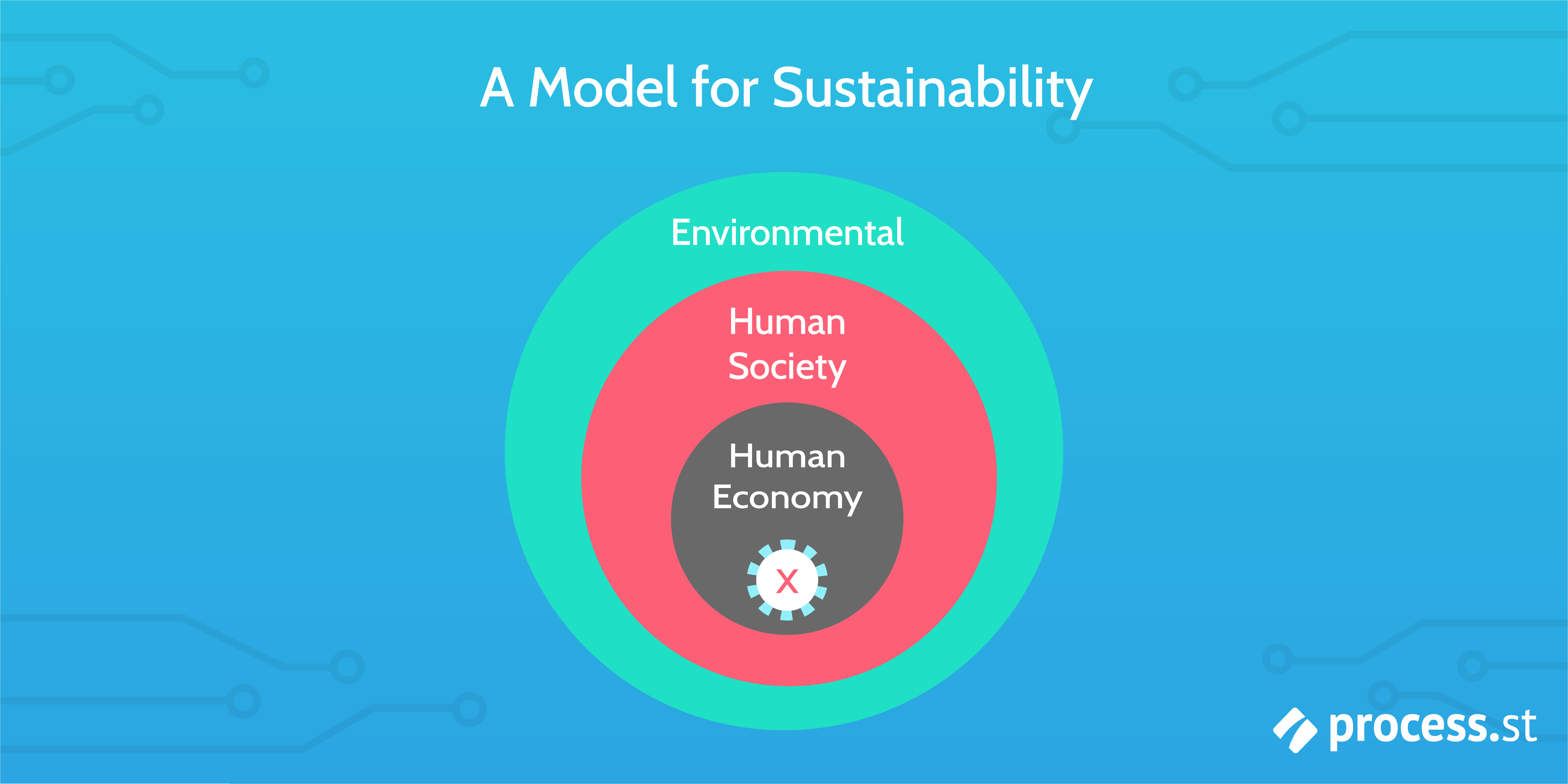
Rather than getting into the nitty-gritty of how our environment, society, and the economy interact – I leave that job to past Jane in the above linked-article – we are going to take a magnifying glass and zoom in on the economic aspects of sustainability.
Looking at the first definition above, the inclusion of environmental and social factors would give a more accurate view of what economic sustainability means when considering the nested dependencies model.
So, it can be said that we gain a better sense of what economic sustainability is from the second definition.
Or do we?
What does this second definition mean in regards to long-term economic growth?
Let’s find out!
An incorrect economic sustainability definition
According to Thwink.org, a defined level of economic production and long-term economic growth are measurements of a nation’s Gross Domestic Product (GDP). GDP is the total amount of production (goods and services) for a nation, usually within one year.
To give you an idea of GDP per nation, I have detailed 2019 estimates in US$ million, for the following countries:
- United States GDP: 21,344,667
- India GDP: 2,971,996
- China GDP: 14,216,503
- United Kingdom GDP: 2,829,163
- Buthan GDP: 2, 811
- Malawi GDP: 7,436
The top economic goal for most nations is the continual, never-ending growth in regards to GDP. That is, stagnant and falling GDP must be avoided at all costs.
Consider the official GDP growth target for the following:
- The United States’ target GDP growth: 3%
- The United Kingdom’s target GDP growth: 2.5%
- China’s target GDP growth: 6-6.5%
- India’s target GDP growth: 9%.
Sustainability means forever. No nation has a GDP target of less than 2% – unless recovering from a recession. Could we say that economic sustainability means achieving long-term economic growth of 2% or more, forever? As, in practice, this is how it is often used.
Let us alter the definition of economic sustainability from earlier and see what we think:
“Economic sustainability refers to practices that supports steady growth in total national GDP of a minimum of about 2% per year, without negatively impacting social, environmental, and cultural aspects of the community.”
Does this give us a better idea of what economic sustainability is?
The problem with considering national GDP is that national GDP does not tell us how much the average person’s income is. We have no idea how many people are at the lower end of the income distribution.
Sustainability considers not just economic performance today, but economic performance in tomorrow’s world too. However, as Bertolt Brecht once commented: “Whose tomorrow is tomorrow? And whose world is the world?”
Considering the nested dependencies model, that GDP growth should maybe be reflected in growth across a broader part of society, or across broader geographies, in order to be sustainable – in a green sense, as much as an economic one.
This leads us to potentially looking at a slight alternative metric of GDP per person – reflecting both the growth goals of nations and also the broader impact of that in a social and environmental sense.
Can we say that our edited definition of economic sustainability is, again, not giving us a complete picture of what economic sustainability means?
A correct economic sustainability definition
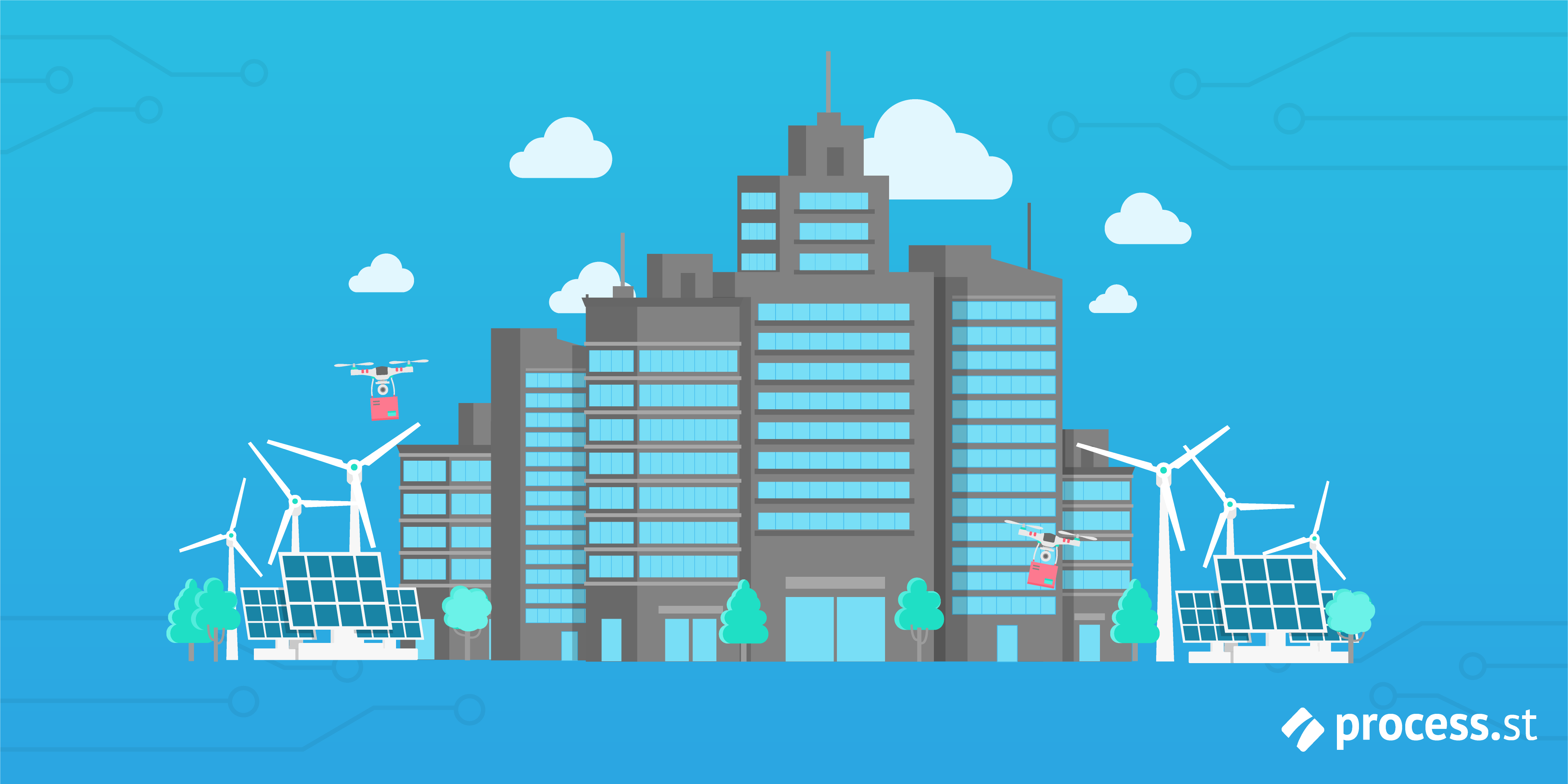
Considering the average GDP per person, we begin to realize that there is a large gap between developed and developing nations:
- The United States’ average GDP per person: 47,200
- The United Kingdom’s average GDP per person: 34,800
- China’s average GDP per person: 7,600
- India’s average GDP per person: 3,500
The next question is: Does GDP growth per person support our goal of understanding economic sustainability?
Well, this depends on what the goal of sustainability is… One definition might be the following:
“Sustainability focuses on meeting the needs of the present without compromising the ability of future generations to meet their needs.” – Investopedia, Sustainability
In this sense, sustainability is about meeting people’s needs, to optimize the quality of life for those living and their descendants. Now consider average GDP per person, does this meet the goal of sustainability?
Not quite.
Contemplate the poverty threshold. This is the minimum income deemed necessary to achieve an adequate standard of living in a given country. In developing countries, this threshold is pretty low. In developed countries, this threshold is higher and is often referred to as a minimum standard of living.
Below these two thresholds, we have a poor quality of human life where people’s needs are not met.
Taking this into consideration, let us again adjust our definition for economic sustainability. We create a fourth interpretation:
“Economic sustainability refers to growth inclusive of practices that support the preferred percentage of its population below its preferred minimum standards of living level, without negatively impacting social, environmental, and cultural aspects of the community.”
Is economic sustainability merely a myth?
Taking this fourth definition, we can determine how far the world is from becoming economically sustainable. To do this, we need to consider the percentage of people below the minimum living standards.
This data differs per country, but some data from the CIA Factbook is shown below. The minimum is defined by The International Poverty Line when referring to developing economies, equivalent to anything less than $2 per day. The UK and US set their own targets.
- The United States: 15% of people living below the minimum standard of living
- The United Kingdom: 14% of people living below the minimum standard of living
- India: 76% of people living below the minimum standard of living
- China: 36% of people living below the minimum standard of living
Based on the above percentages, we can infer that the world is seemingly far beyond reaching economic sustainability, per our current working definition!
This begs the question… is economic sustainability achievable or is it merely a myth?
You see, it may be impossible for developing countries like India and China, to catch up with developed countries in terms of average GDP per person. Here’s why.
Remember when I talked about the interacting factors, that is society and the environment, which influence our economy? Well, in this instance, our movement towards economic sustainability under this fourth definition is halted by our environment.
How?
To explain, I am going to spring another definition on you. The definition of the term ‘ecological footprint’:
“The simplest way to define ecological footprint would be to call it the impact of human activities measured in terms of the area of biologically productive land and water required to produce the goods consumed and to assimilate the wastes generated. More simply, it is the amount of the environment necessary to produce the goods and services necessary to support a particular lifestyle.” – WWF, Ecological Footprint
This “particular lifestyle” would be one where humans are living above the minimum standard.
The ecological footprint of the world’s population in 2007 was 18 billion hectares.
2012 saw this rise to 20.1 billion hectares. The global carrying capacity is 12 billion hectares, and unfortunately, we’re already pushing twice the Earth’s capacity at our current efficiency levels.
In short, the level of environmental impact caused by 7.7 billion individuals living at the required standard would be very difficult to sustain – ironic…
So we have a problem – the economic sustainability problem – which needs to be solved.
Solving the economic sustainability problem
The issue with economic sustainability, and why it seems unachievable, is due to unresolved root causes.
Economic sustainability is not possible with our current practices used to deliver a minimum living standard. To achieve economic sustainability our economy and our current way of life have to adapt.
We need to be more efficient in our use of available resources, find new ways to harness currently underused resources and reduce our consumption in the process.
Across the world, there are a multitude of social movements and grassroots projects underway, exemplifying what our next, leave-things-better economy could look like.
In this section of the article, I will give examples of some of these projects to illustrate what I mean by unresolved root causes.
Economic sustainability problem #1: Energy ⚡
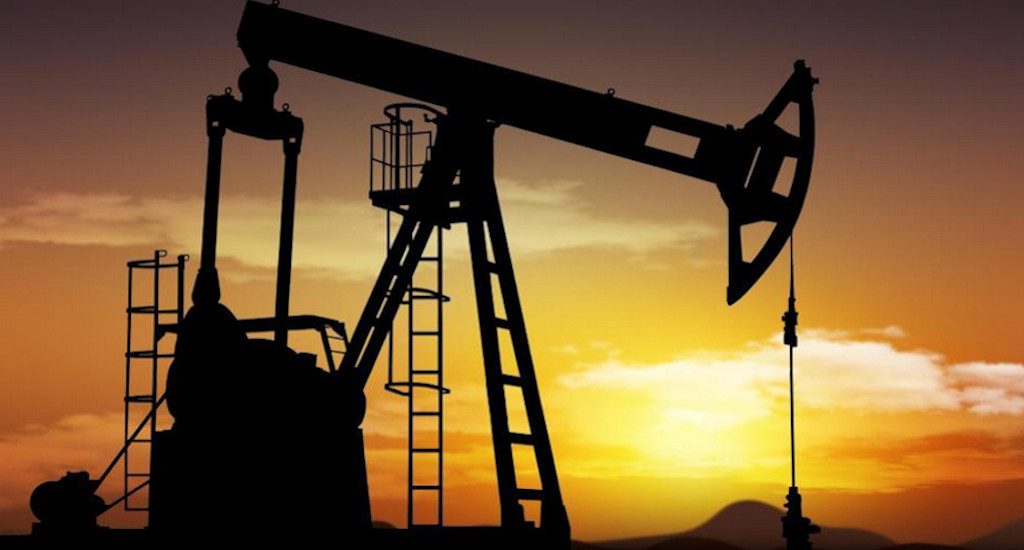
In 1971, the geologist Earl Cook discovered that each then-modern city dweller required 230,000 kilocalories per day.
Compare this to our hunter-gatherer relatives, who survived on 5000 Kcal per day.
You can see, there is a gap between simple and complex lifestyles, which has widened even further since 1971.
Factoring in all systems, networks, and gadgets that fulfill our modern-day demands means that each New York city dweller needs 60x more energy and resources than their hunter-gatherer ancestors did.
To grant the high energy demands of individuals living at and above the required minimum standard, our energy industry burns its way through easy-to-access fossil fuels.
However, being a finite resource, fossil fuel extraction is becoming harder and more expensive every year. To make matters worse, as our modern-day human system becomes more complicated, we demand more and more energy to keep the system going.
We have an energy crisis.
In short, how we obtain energy from our environment currently, cannot continue to supply our energy demands. This renders economic sustainability an unachievable myth under these circumstances. We have to look at the root causes of our energy crises, to resolve this roadblock and achieve economic sustainability.
Conserve Energy Future have outlined the following root causes:
- Overconsumption
- Overpopulation
- Poor infrastructure
- Unexplored renewable energy options
- Delay in commissioning power plants
- Wastage of energy
- Poor distribution systems
One way we can switch up our economic system is by tackling the above root causes of our energy crises.
Let’s take a look at how alternative renewable energy options are being explored today.
One exciting project is the Space Solar Power Project. As the name suggests, this project is essentially building a solar powerplant in space.
As Ali Hajimiri puts it:
“Above the Earth, there’s no day and night cycle and no clouds or weather or anything else that might obstruct the sun’s ray, so a constant power source is available.” – Ali Hajimiri, Solar Power Stations In Space Could Supply The World With Limitless Energy
It sounds and feels like I have jumped into the 22nd century. Surely this level of technology, innovation, and engineering is not possible yet (were my initial, albeit pessimistic, thoughts).
Despite my doubts, the project is well and truly gaining traction. The team at Caltech has successfully tested and proved that the concept works on the ground. The next step is to perform scale-down experiments in space.
The research into solar power systems in space is ongoing. Scientists are comparing the amount of energy it would take to implement these solar power systems against the energy obtainable from these systems. The removal of atmospheric effects means space solar-power can generate around 2,000 gigawatts of energy, compared to 1.8 gigawatts generated from the largest land solar farm. The potential is there, but further research and cost-benefit analyses are needed.
Renewable energy sources offer alternative solutions. However, retrofitting these renewable energy systems on a large enough scale, to meet present and future energy demands, would require vast investments of material, organizational effort, and ironically, energy.
As blogger Gail Tverberg says:
“A lack of cash flow for investment and infrastructure will eventually bring the system down.” – Gail Tverberg, Can We Invest Our Way Out of an Energy Shortfall?
It seems that more investment, infrastructure, and support is needed in support of renewable sources of energy for them to become an actionable alternative. Also, renewable sources tackle only one of the seven outlined root causes of our energy crises. All causes must be considered and acted on to produce viable solutions.
Economic sustainability problem #2: Water keeping
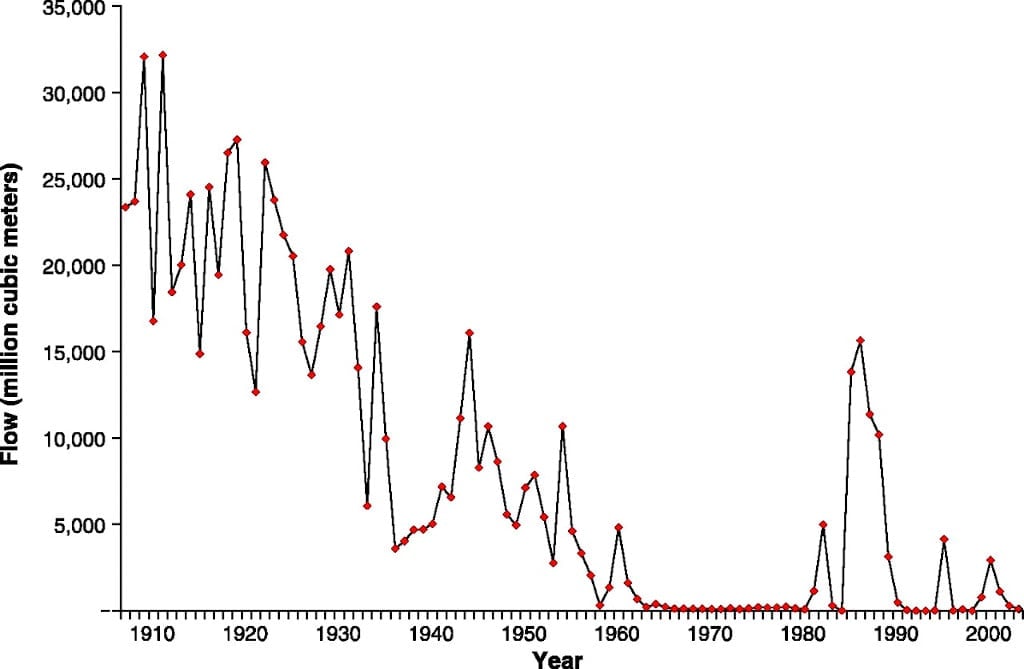
Las Vegas, a city built from the desert, inhabits the biggest consumers of water in the world. 800-1000 liters of water are consumed per person per day.
It is estimated that water shortages could impact nearly 2 billion people in 2025. An estimated trend that represents yet another issue blockading our ability to reach economic sustainability.
So what can we do about it?
Focusing on a solution, we are brought to Mexico City.
Mexico City was once a grounding of interconnected lakes and more than sixty rivers. Looking around, it is now a dusty megalopolis covered by sandy roads, concrete skyscrapers, and shopping malls. Rivers and lakes were treated as a problem to be overcome. Hard engineering channeled the waterways, built over them and covered them. Out of sight, out of mind…
Luckily though, past water systems were not completely out of mind for some.
A large team of ecologists and architects worked to replace the busy roads with a ring of water and parks around the city. This restored at least three rivers in the process. Since, these rivers have become home to a myriad of plants, aquatic wildlife, and birds. Mexico’s rivers are reborn.
We are seeing equal changes across cities elsewhere. For example, the city of Seoul in South Korea removed a major freeway to make way for the Cheonggyecheon River.
These examples represent a shift in thinking. A knowledge that, at the heart of economic sustainability, there is a need for improved environmental health.
Economic sustainability problem #3: Feeding

One in nine people on earth, or 795 million people, do not have enough food to lead a healthy lifestyle.
According to the Food and Agriculture Organization of the United Nations:
- Roughly one-third of human consumable food production in the world is lost or wasted every year. That is, 1.3 billion tonnes of food is cast aside, unused.
- The food losses and waste amount to roughly $680 billion in industrialized countries, and $310 billion in developing countries.
- Consumers of developed countries waste almost as much food (222 million tonnes) as the entire food production of sub-Saharan Africa (230 million tonnes).
We have a food wastage issue that needs to be addressed for economic sustainability to be obtainable.
The Food Commons team is an ambitious group trying to do just that. Community gardens and urban farming are propagating throughout cities, in addition to constructing widespread projects connecting schools to farmers.
Top-down connections are being made too, at a policy level. For example, in 2014 the U.S. Department of Agriculture announced a $78 billion investment in local and regional food systems. This included food hubs, farmers markets, distribution hubs, and other local business enterprises.
This connectedness inspires social innovation and support to transform the agricultural system, to make it more localized and less wasteful. With less waste, we are one step closer to providing enough food to meet human need, and thus closer to achieving economic sustainability.
Why economic sustainability is important for your business
To understand the benefits that come with business sustainability, you can refer to my previous article How You Can Create a Sustainable Business For Long-Term Success – or, check out this summary of the key short-term benefits below:
- Being a sustainable business can help you when bidding for contracts from governmental or corporate bodies who work with sustainability.
- Focusing on sustainability allows you to scrutinize your overall business functions – specifically, where you are wasting time, effort, and money. For example, by incorporating environmental accounting procedures, you can reduce your energy costs.
- By improving your workplace environment, you will reduce employee turnover, save money, and benefit from increased productivity, engagement, and innovation. No one wants to work for the baddies.
- Publicly championing your environmental efforts can improve branding and gain you more loyal and satisfied customers. People want to feel like their buying decisions are helping the planet, not hurting it.
Top-down sustainability efforts can reap rewards in local communities
Throughout this article, we have given examples of both top-down and bottom-up ideas or initiatives which can help us toward our conception of economic sustainability.
We need to have day-to-day actions aligned with policy in order to achieve our outcomes.
According to The Fiscal and Economic Benefits of Sustainability, a 2014 report from the Institute for Local Government, policymakers on a local level can gain the following direct benefits of investing in, and legislating for, sustainable outcomes:
Economic sustainability benefit #1: Increased investment
Change is constant in life, and, in the business world, this is no exception. We are beginning to see that rather than one bottom line, consideration of a triple bottom line is gaining more and more traction.
Green bonds are on the rise, and there is a growing interest in sustainable developments.
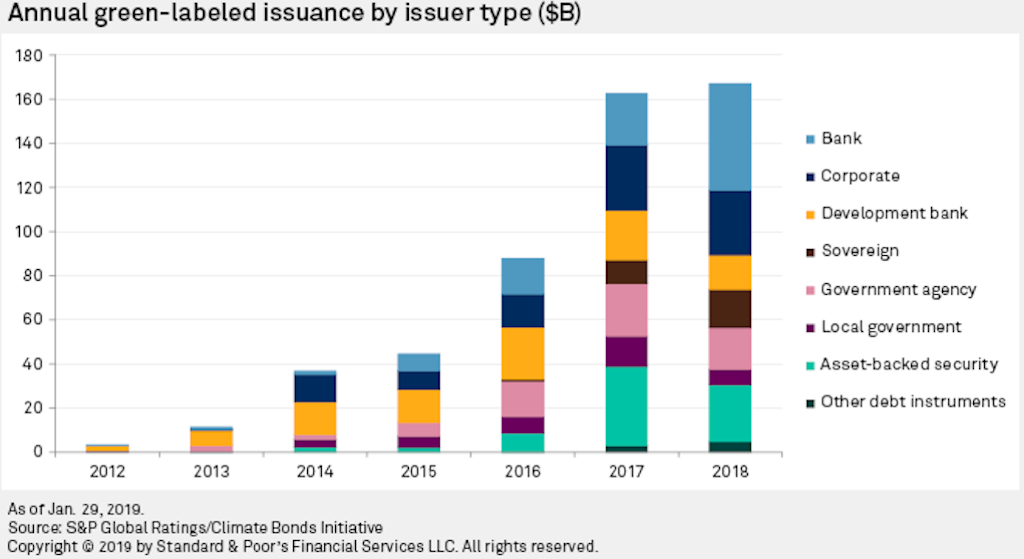
There is increasing investor interest in environmental, social and governance, and ESG strategies, prompting growth in sustainability-related fixed-income products.
By becoming sustainable, investors recognize the improvements this will have in terms of the economic sustainability of your business, meaning you gain increased investor interest.
Economic sustainability benefit #2: Budget savings
To achieve a triple bottom line, cost savings are obtained through the reduction of environmentally costly activities, such as reducing water or energy consumption.
If you want to know how you can reduce your own agency costs, see our Environmental Accounting Internal Audit checklist.
These savings also act to reduce long-term liabilities via cost savings and lower operating costs.
Economic sustainability benefit #3: Boost in tax and fee revenues
Economic sustainability is all about increasing the average GDP per person.
This will create a positive feedback loop, increasing local economic activity. With increased economic activity comes boosted tax and fee revenues.
Economic sustainability benefit #4: Improved fiscal stability
Economic sustainability creates a stable economy, one that is resilient to uncertainty such as potential rises in energy and water costs. In terms of your business, economic sustainability safeguards your profession, so that your operations are buoyant and strong in the face of change.
Economic sustainability benefit #5: Targeted investment
Increased savings and economic activity spur targeted investments and additional savings, revenues and economic development, which all benefit you at a business level.
How to be economically sustainable in your business with Process Street
Several key ideas make up the economic angle of sustainability:
- Smart growth
- Long-range planning
- Cost savings
- Research and development spending
- Cost of living
However, sustainability does not come until social and environmental interactions are considered (see image below). That is, economic sustainability cannot be achieved until you have acquired a sustainable business.
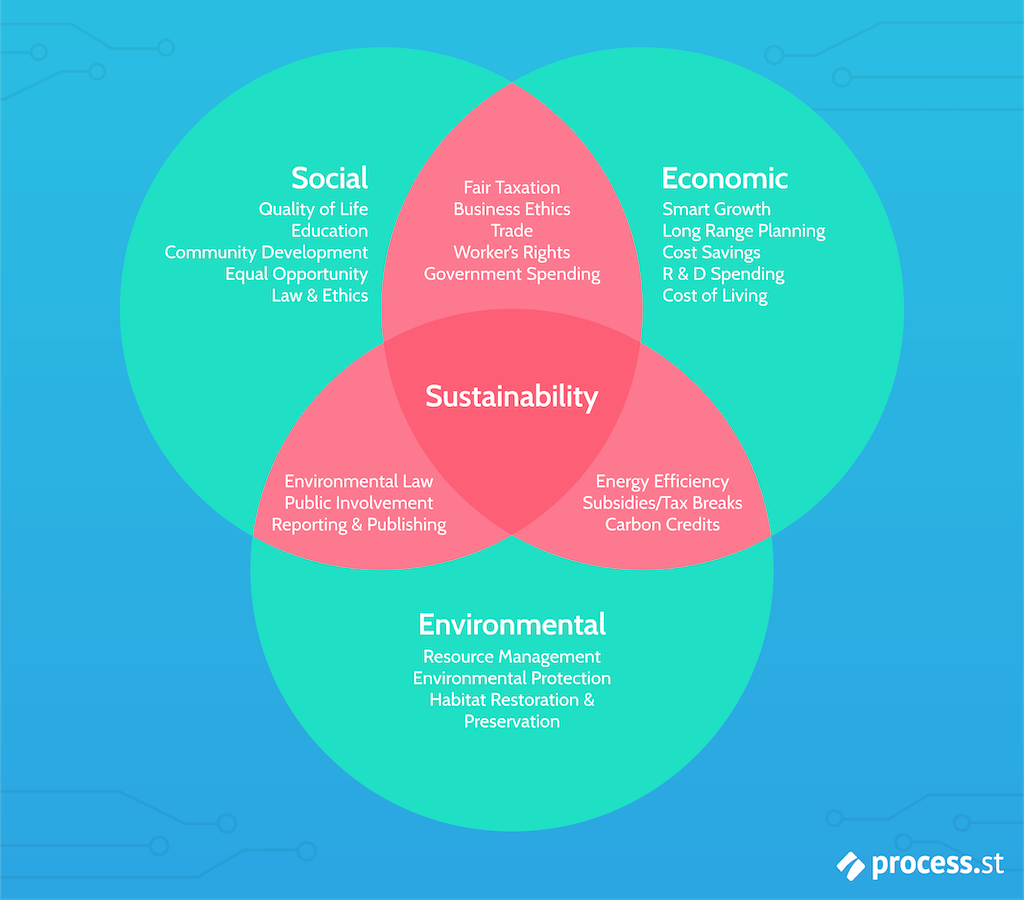
As one of the leaders of business process management (BPM) software, Process Street has targeted common business procedures and looked at how they can be made more sustainable. The aim is to help you achieve a sustainable business for sustained economic success.
We provide you with free and easy to use template resources, to facilitate you in reaching your sustainability goals.
Think of our templates as guides, to help you keep on track of the development and implementation of your sustainable business.
Our templates have been designed to enhance efficiency, productivity and prevent mistakes and failures. You will also find our templates have the following features, making them superpowered:
- Stop tasks to ensure task order
- Dynamic due dates, so no deadline is missed
- Conditional logic, creating a dynamic template that caters to your needs
- Role assignments, to ease task delegation within your team
Dive into the resources and templates below to gain more of an understanding of the broad discipline that is business sustainability:
- 12 Inspection Checklists to Maximize Safety in the Work Place
- Office Safety Inspection Checklist
- Hotel Safety Inspection Checklist
- What is IS0 31000? Getting Started With Risk Management
- ISO 45001 Occupational Health and Safety (OHS) Audit
- Warehouse Safety Checklist
- 5 Free ISO 14001 Checklist Templates for Environmental Management
- Environmental Accounting Internal Audit
- Hotel Sustainability Audit
- What is Workplace Diversity? Improving Diversity in the Workplace (8 Free Templates)
- How to Build Better Employee Accountability with Processes
- How to Get, Process and Act on Employee Feedback
- Why You Should Unleash Team Collaboration and How to Do it
- GRI Standards 101: Foundation 2016 Checklist Template
- GRI Standards 102: General Disclosure 2016 Checklist Template
- GRI Standards 103: Management Approach 2016 Checklist Template
- Environmental Management System (EMS) Implementation Checklist Template
Reconnect with your wild side – reduce your ecological footprint and become economically sustainable
In this article, we have:
- Attempted to redefine what economic sustainability is. We have considered what it means for each individual of the 7.7 billion that occupy our planet today.
- Learned about projects bringing this new, sustainable economy to the forefront of economic development.
- Considered the benefits economic sustainability can bring in a business sense.
- Given actionable resources to help show you how you can create a business that is more sustainable so that you can start working to achieve economic sustainability today.
I hope I have persuaded you that there is a profound change underway. Across our world, we are starting to see advancements aimed to reduce our ecological footprint.
The goal: to create a world that can reach an economically sustainable level. That is, by reducing our ecological footprint, more people can live at a minimum living standard.
Economic sustainability is not about continual growth in wealth. It is multidisciplinary, with huge social and environmental factors. It is about the regeneration of life on Earth by meeting social and environmental needs. The core value of our emerging sustainable economy is about stewardship, rather than extraction – the positive of which feeds on the positive.
By finding alternative ways that work in partnership with living processes, the easier it will become to reach economic sustainability.
And by reconnecting with our wild side, we can reduce our ecological footprint, achieve economic sustainability, and meet the needs of people and our planet.
We’d love to hear about the different ways you are sustainable in your business operations in the comments below! Also, if you have any questions regarding economic sustainability, please do ask.







 Workflows
Workflows Projects
Projects Data Sets
Data Sets Forms
Forms Pages
Pages Automations
Automations Analytics
Analytics Apps
Apps Integrations
Integrations
 Property management
Property management
 Human resources
Human resources
 Customer management
Customer management
 Information technology
Information technology



Jane Courtnell
Hi there, I am a Junior Content Writer at Process Street. I graduated in Biology, specializing in Environmental Science at Imperial College London. During my degree, I developed an enthusiasm for writing to communicate environmental issues. I continued my studies at Imperial College's Business School, and with this, my writing progressed looking at sustainability in a business sense. When I am not writing I enjoy being in the mountains, running and rock climbing. Follow me at @JaneCourtnell.